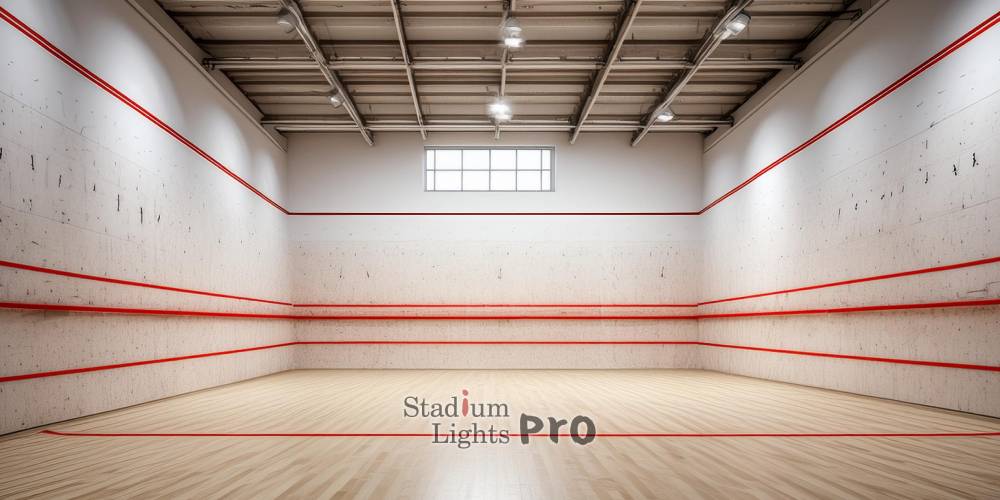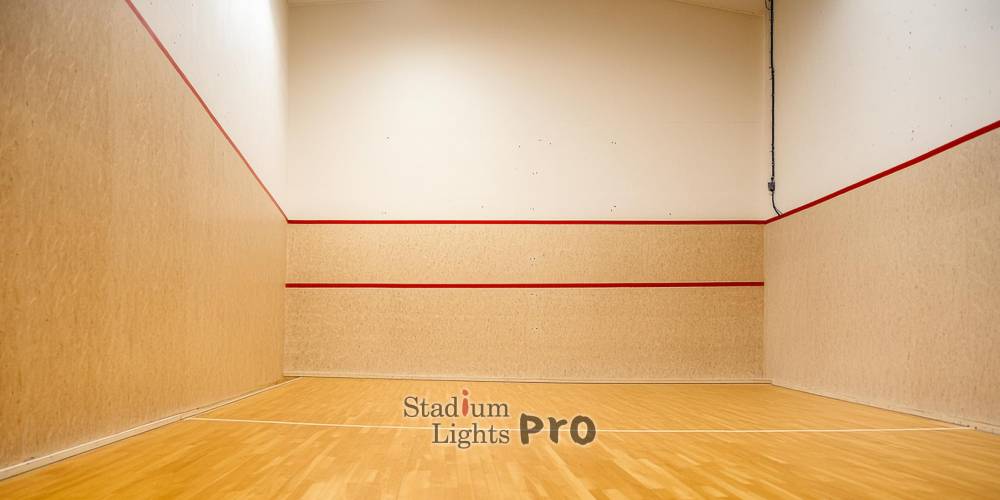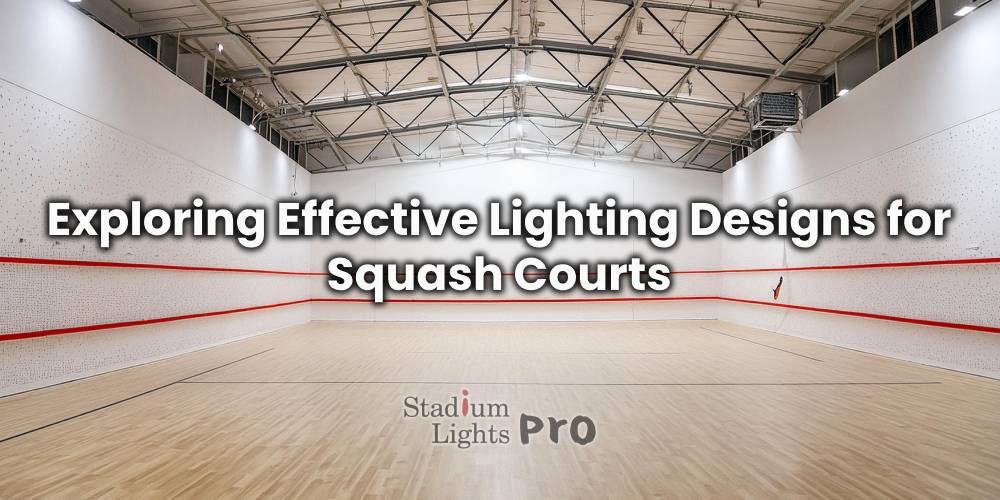The fast-paced nature of squash requires players to accurately track the ball and react swiftly, tasks that are significantly hindered by poor visibility. Additionally, inadequate lighting increases the risk of accidents and injuries, compromising player safety. LED lighting emerges as an optimal solution for squash court illumination due to its superior brightness, color rendering, and glare control capabilities, ensuring optimal visibility and reducing eye strain for players. Furthermore, LED lights offer energy efficiency and durability, resulting in long-term cost savings and environmental benefits. Therefore, prioritizing LED lighting in squash court design not only enhances the overall playing experience but also promotes player safety and sustainability.
Table of Contents
ToggleUnderstanding LED Lighting Technology
Overview of LED technology and its advantages
LED (Light Emitting Diode) technology revolutionizes lighting solutions with its myriad advantages. Unlike traditional lighting sources, LEDs generate light by the movement of electrons within a semiconductor material, resulting in highly efficient illumination with minimal energy wastage. This intrinsic efficiency translates to significant energy savings, making LEDs environmentally friendly and cost-effective over their long lifespan, which can extend up to 25 times that of conventional bulbs. Moreover, LEDs emit virtually no heat, reducing the risk of burns and fire hazards. Their small size and versatility enable precise control over lighting intensity and color, facilitating customizable lighting solutions tailored to specific needs. Besides, LEDs contain no toxic materials like mercury, contributing to a safer and more sustainable environment. With their remarkable energy efficiency, durability, and adaptability, LEDs have emerged as the lighting technology of choice across diverse applications, from residential and commercial spaces to outdoor and industrial settings, shaping the future of lighting design and efficiency.
Specific benefits of LED lighting for squash courts
LED lighting offers a range of specific benefits tailored to the unique requirements of squash courts. Firstly, LEDs provide superior brightness and color rendering, ensuring optimal visibility and enhancing players’ ability to track the ball’s movement accurately. This improved visibility is crucial for fast-paced gameplay, allowing players to react swiftly and make precise shots. Moreover, LED lights offer excellent glare control, minimizing eye strain and discomfort for players while maintaining uniform illumination across the court. Furthermore, LED technology’s energy efficiency leads to cost savings and reduces environmental impact, making it a sustainable choice for squash court lighting. The longevity of LED bulbs also means less frequent maintenance and replacement, resulting in reduced downtime and operational costs for squash court facilities. Overall, the specific benefits of LED lighting contribute to an enhanced playing experience, improved performance, and greater sustainability for squash courts.

Requirements for Squash Court Lighting
Characteristics of ideal lighting for squash courts
The characteristics of ideal lighting for squash courts are essential for ensuring optimal visibility, performance, and safety during gameplay. Firstly, uniformity of illumination across the entire court is crucial to eliminate shadows and ensure consistent visibility of the ball and players from all angles. This uniform lighting distribution helps players accurately judge distances and anticipate movements, facilitating fair and competitive gameplay. Additionally, glare control is vital to minimize eye strain and discomfort for players, especially during intense rallies or when looking up towards the lights. Ideal lighting for squash courts also includes high color rendering capabilities to accurately represent the colors of the ball and court markings, enhancing visibility and contrast. Moreover, sufficient lighting levels are necessary to ensure adequate brightness without overexposure, allowing players to see clearly while maintaining a comfortable playing environment. Finally, energy efficiency and durability are desirable characteristics to minimize operating costs and maintenance requirements, making the lighting system sustainable and cost-effective in the long run. Overall, the ideal lighting for squash courts combines uniformity, glare control, color rendering, brightness, and efficiency to optimize the playing experience for participants while ensuring safety and fairness on the court.
How LED lighting meets these requirements effectively
LED lighting effectively meets the requirements of ideal lighting for squash courts through its advanced technological features and versatile design. Firstly, LEDs offer superior uniformity of illumination, providing even brightness across the entire court without creating shadows or dark spots, thus ensuring consistent visibility for players. In addition, LED lights are designed with glare control mechanisms, such as diffusers or optics, to minimize glare and reduce eye strain, enhancing player comfort and safety during matches. Moreover, LED technology enables precise color rendering, ensuring accurate representation of the ball’s color and court markings, which is essential for players to track the ball’s movement and make accurate shots. Furthermore, LED lighting systems can be customized to deliver optimal brightness levels for squash courts while maintaining energy efficiency, allowing facilities to meet lighting requirements without excessive energy consumption. Lastly, the long lifespan and durability of LED bulbs result in reduced maintenance needs and operating costs, making LED lighting a sustainable and cost-effective solution for squash court illumination. Overall, LED lighting effectively meets the diverse requirements of ideal lighting for squash courts, providing superior performance, energy efficiency, and durability to enhance the playing experience for participants while ensuring safety and fairness on the court.
Implementation of LED Lighting in Squash Courts
Installation process and considerations
The installation process of LED lighting for squash courts involves several key considerations to ensure optimal performance and efficiency. Firstly, it’s essential to assess the existing lighting infrastructure and electrical systems to determine compatibility with LED fixtures and any necessary upgrades or modifications. Next, selecting the right LED fixtures tailored to the specific requirements of squash courts, including lighting levels, uniformity, and glare control, is crucial. Additionally, proper positioning and orientation of LED fixtures are essential to achieve uniform illumination across the court surface while minimizing glare and shadows. During installation, attention to detail is paramount to ensure precise alignment and secure mounting of fixtures to prevent potential safety hazards or performance issues. Furthermore, integrating advanced lighting controls, such as dimmers or motion sensors, can enhance energy efficiency and allow for customizable lighting settings based on usage patterns and preferences. Lastly, regular maintenance and inspection of LED lighting systems are necessary to ensure continued performance and longevity, including cleaning fixtures, replacing faulty components, and updating firmware or software as needed. Overall, careful planning, selection, and installation of LED lighting, along with ongoing maintenance, are essential considerations to maximize the benefits of LED technology for squash court illumination.

Advantages of LED Lighting in Squash Courts
Improved visibility and uniformity
The integration of LED lighting in squash courts leads to improved visibility and uniformity, enhancing the playing experience for athletes. LED fixtures offer bright, even illumination across the court surface, eliminating shadows and dark spots that can hinder visibility and affect gameplay. This uniform lighting distribution ensures that players can clearly see the ball, court lines, and opponents from any position on the court, facilitating accurate judgment of distance and movement. As a result, athletes can react more quickly and make precise shots, leading to a more competitive and enjoyable game. Furthermore, the improved visibility provided by LED lighting enhances safety by reducing the risk of trips, falls, and collisions on the court. Overall, the enhanced visibility and uniformity offered by LED lighting contribute to a superior playing environment in squash courts, optimizing performance and minimizing safety hazards for athletes.
Energy efficiency and cost savings
LED lighting in squash courts offers significant advantages in terms of energy efficiency and cost savings. LED fixtures consume considerably less energy compared to traditional lighting sources such as incandescent or fluorescent bulbs, leading to lower electricity bills for squash court facilities. The energy efficiency of LEDs is attributed to their ability to convert a higher percentage of electrical energy into light, with minimal energy wasted as heat. Additionally, LED bulbs have a longer lifespan than conventional lighting options, reducing the frequency of replacements and associated maintenance costs. This longevity not only saves on replacement expenses but also minimizes downtime for the court, ensuring uninterrupted gameplay. Furthermore, the reduced energy consumption of LED lighting aligns with sustainability goals, helping squash court facilities reduce their carbon footprint and environmental impact. Overall, the energy efficiency and cost savings offered by LED lighting make it a smart and economical choice for illuminating squash courts, providing long-term benefits for both facility operators and the environment.
Minimal maintenance requirements
LED lighting for squash courts is known for its minimal maintenance requirements, offering convenience and cost savings for facility operators. Unlike traditional lighting sources such as fluorescent or incandescent bulbs, LED fixtures have a significantly longer lifespan, often lasting up to 25 times longer. This longevity means that LED bulbs require less frequent replacement, reducing the need for maintenance interventions and associated labor costs. Besides, LED lighting systems are designed to be durable and resistant to shock, vibration, and temperature fluctuations, ensuring reliable performance over time. Furthermore, the robust construction of LED fixtures minimizes the risk of damage and malfunction, further reducing maintenance needs. Overall, the minimal maintenance requirements of LED lighting contribute to lower operating costs and increased operational efficiency for squash court facilities, allowing them to focus on providing an optimal playing experience for athletes.
Addressing Challenges and Limitations
Potential obstacles in adopting LED lighting for squash courts
Several potential obstacles may arise when considering the adoption of LED lighting for squash courts, necessitating careful planning and consideration. Firstly, the upfront cost of LED fixtures and installation may pose a significant barrier, especially for facilities with limited budgets or financial constraints. While LED technology offers long-term cost savings through reduced energy consumption and maintenance requirements, the initial investment may require careful budgeting and financing arrangements. Secondly, compatibility issues with existing electrical infrastructure or lighting controls may arise, requiring upgrades or modifications to accommodate LED fixtures effectively. Additionally, concerns about the quality and performance of LED lighting, such as brightness, color rendering, and glare control, may need to be addressed through thorough testing and evaluation before widespread adoption. Furthermore, resistance to change from stakeholders, including facility managers, staff, and athletes, may present challenges in transitioning from traditional lighting to LED technology. Educating and garnering support from stakeholders through communication and demonstration of the benefits of LED lighting can help overcome this obstacle. Finally, regulatory compliance and permitting requirements may need to be navigated, particularly in terms of ensuring adherence to lighting standards and regulations for sports facilities. Addressing these potential obstacles through careful planning, stakeholder engagement, and compliance with regulations can facilitate the successful adoption of LED lighting for squash courts, unlocking its numerous benefits and advantages.
Strategies to overcome challenges and maximize benefits
Implementing LED lighting in squash courts involves navigating various challenges, but several strategies can help overcome these obstacles and maximize the benefits of this advanced lighting technology. Firstly, addressing the upfront cost barrier can be achieved through financial planning, seeking out available grants or incentives for energy-efficient upgrades, and exploring financing options or leasing agreements to spread out the initial investment. Moreover, conducting a thorough assessment of the existing electrical infrastructure and making any necessary upgrades or modifications can ensure seamless integration of LED fixtures. Engaging with reputable suppliers and manufacturers and conducting pilot installations or demonstrations can help alleviate concerns about LED lighting quality and performance, allowing stakeholders to experience the benefits firsthand. Moreover, implementing a comprehensive change management plan that includes stakeholder education, training, and involvement can help overcome resistance to change and facilitate a smooth transition to LED lighting. Lastly, staying informed about relevant regulations and standards, consulting with experts, and obtaining necessary permits can ensure compliance and regulatory approval for LED lighting installations. By employing these strategies, squash court facilities can overcome challenges and fully realize the benefits of LED lighting, including improved performance, energy efficiency, and cost savings.
Future Trends and Innovations
In the realm of LED lighting for sports facilities, ongoing advancements and emerging technologies present exciting opportunities for enhancing the illumination of squash courts. A. Keeping abreast of the latest developments in LED technology allows for the integration of cutting-edge solutions tailored specifically for sports environments, including squash courts. B. Potential enhancements such as dynamic lighting controls, tunable color temperatures, and precision optics offer customizable lighting configurations optimized for squash court conditions, improving visibility, performance, and player comfort. By leveraging these advancements, squash court facilities can enhance the playing experience, promote energy efficiency, and stay at the forefront of lighting innovation in sports venues.
Conclusion
The integration of LED lighting technology in squash courts represents a significant advancement that enhances both the playing experience and operational efficiency of these facilities. By providing improved visibility, uniformity, and glare control, LED lighting optimizes player performance while reducing safety hazards. Moreover, LED lighting offers substantial energy efficiency and cost savings over traditional lighting sources, contributing to sustainability efforts and reducing operational expenses for squash court operators. Despite potential challenges such as upfront costs and compatibility issues, strategies such as financial planning, stakeholder engagement, and compliance with regulations can facilitate the successful adoption of LED lighting. Looking ahead, ongoing advancements and innovations in LED technology promise even greater benefits for squash courts, with customizable lighting solutions tailored to specific sport environments. By embracing these trends and innovations, squash court facilities can continue to elevate the playing experience for athletes while maximizing energy efficiency and sustainability in their operations.

